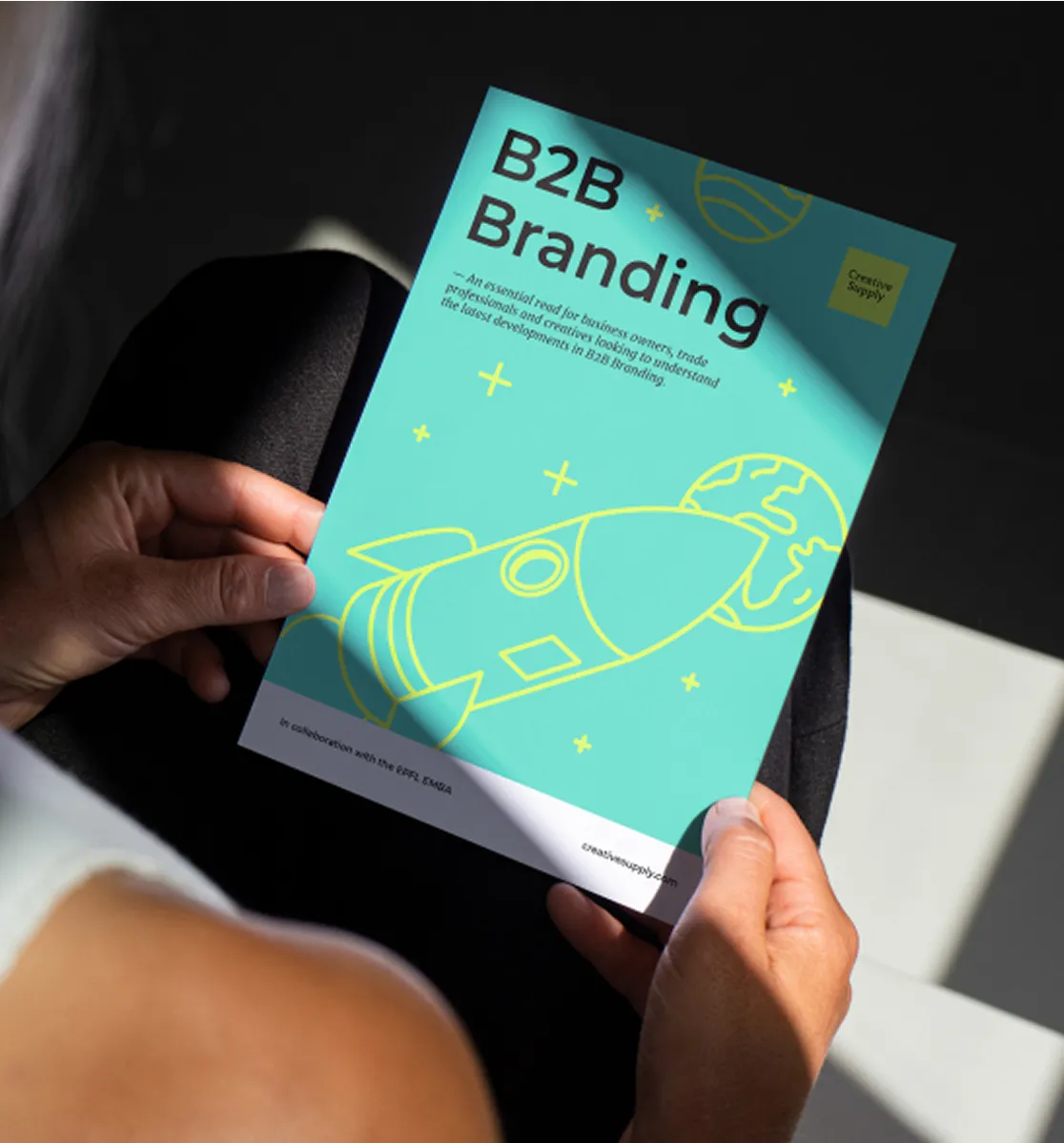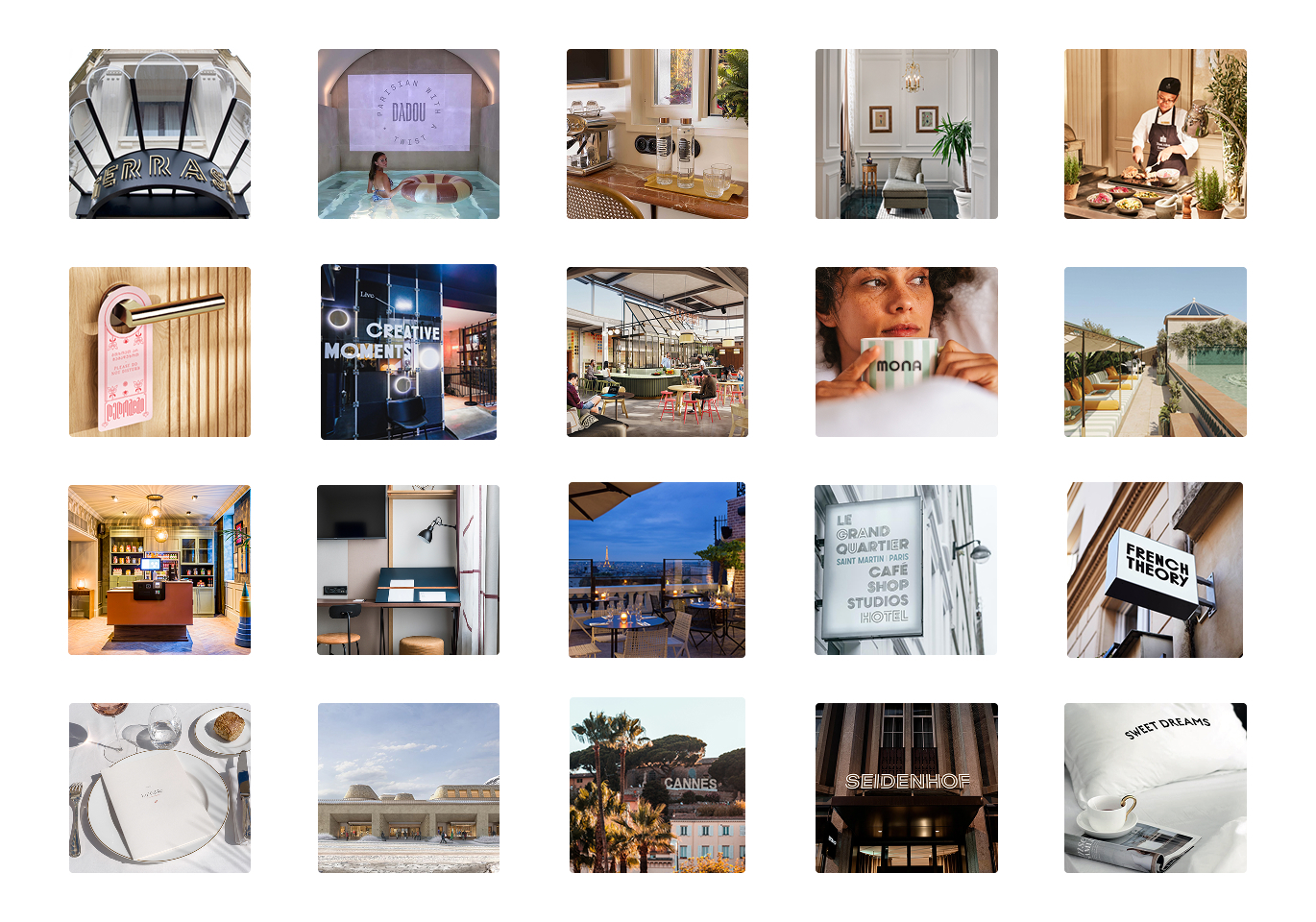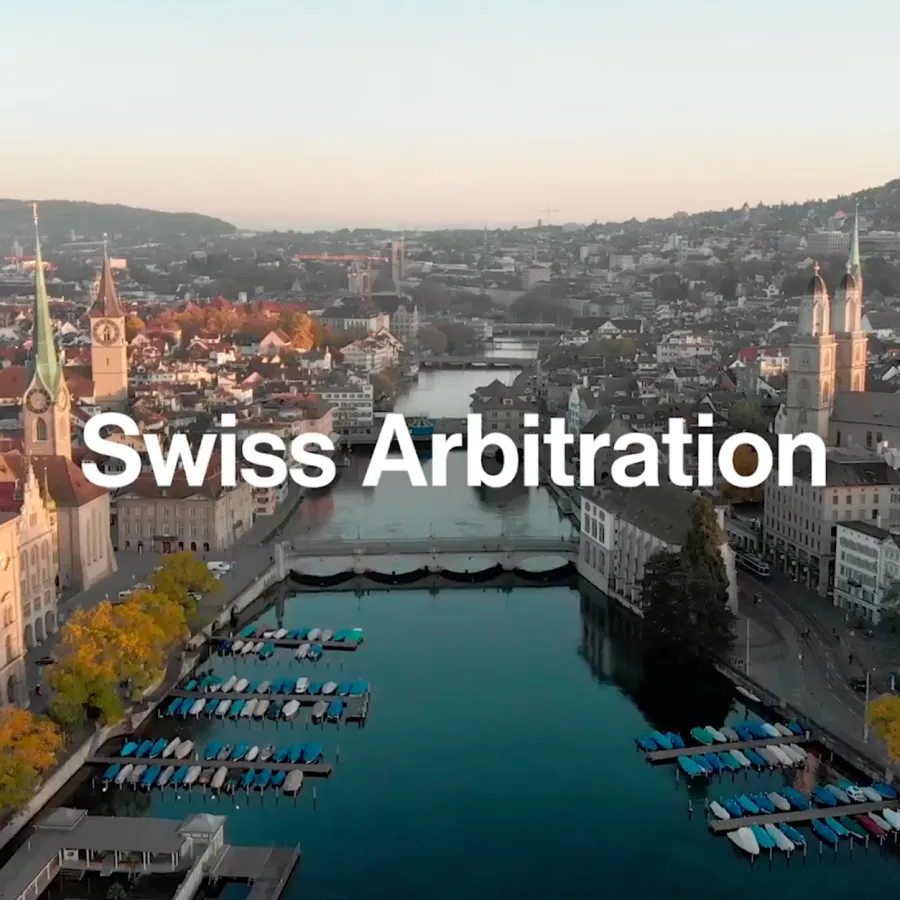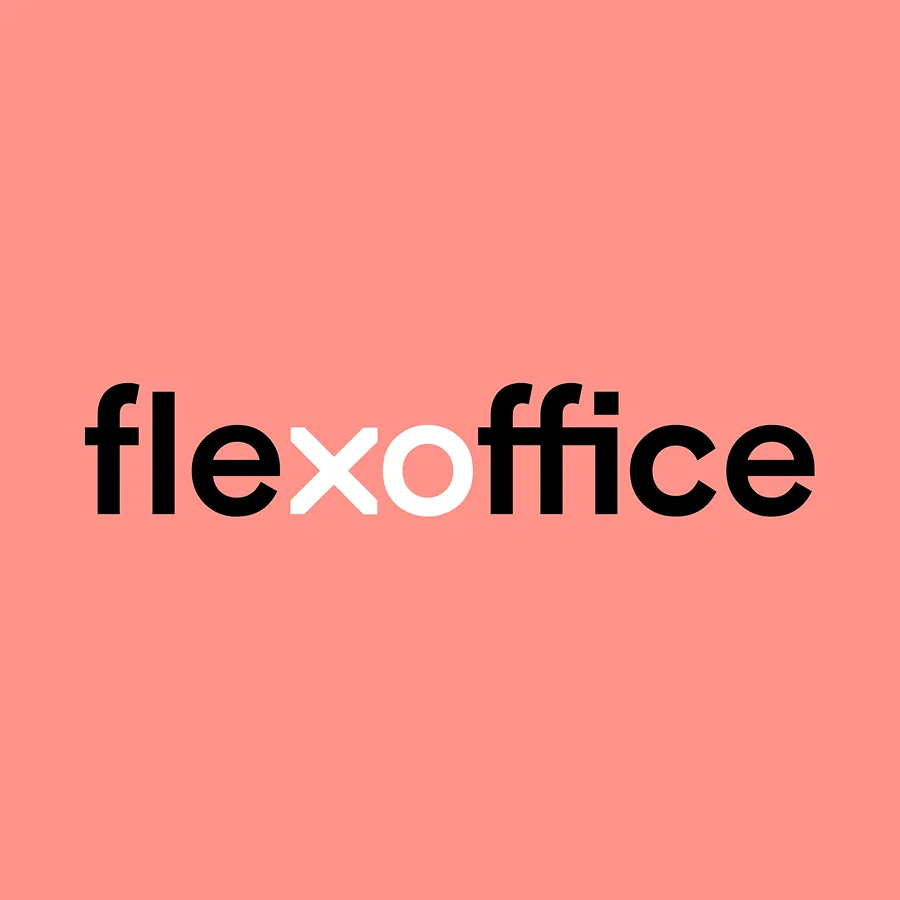How to Build a Compelling B2B Brand Story
In B2B, most brands focus on function: specs, features, processes. But function alone doesn’t win hearts, or long-term partnerships. To truly differentiate in an increasingly commoditised market, your brand needs a compelling story. One that not only communicates who you are, but why you exist.

A strong brand story distills your company’s vision, values and role in the world into a coherent narrative. Unlike a tagline or slogan, it’s not just marketing, it’s strategic. It provides clarity internally, attracts the right clients, and gives your communications lasting consistency.
Why Does a Brand Story Matter in B2B?
A brand story is a strategic narrative that:
- Explains the context around the brand’s origin and the trigger pushing to challenge the status quo
- Communicates an organisation’s vision, benefits and values in a memorable and emotional way
- Helps establish the role of a brand amidst its competition, the market and the world at large
- Cannot be copied. In the context of product commoditisation, ever-shorter product development cycles and patent infringement, a brand story offers B2B companies a resilient way to assert their individuality.
Finding the Right Story for Your B2B Business
Digitalisation, globalisation and commoditisation are just a few of the trends prompting companies to adapt their narrative, so their clients and business partners understand what they stand for and where they are going. In this sense, the brand story acts as a “stable agent” in periods of organisational transition.
Take Lift, a Geneva-based organisation we helped update its brand narrative to better reflect its role and ambitions. Originally known for their yearly tech conference, Lift had outgrown that positioning. Internally, the team was driving initiatives around open innovation and digital transformation. But externally, they were still seen as “just an event”. The story we developed frames Lift as an international organisation promoting open-innovation as a positive change driver for business and society rather than as an events organiser.
By reframing their brand story around their bigger mission, using open innovation to create positive impact for business and society, Lift repositioned itself as a thought leader. This narrative shift helped them attract new partners, grow internationally, and expand their service offering.
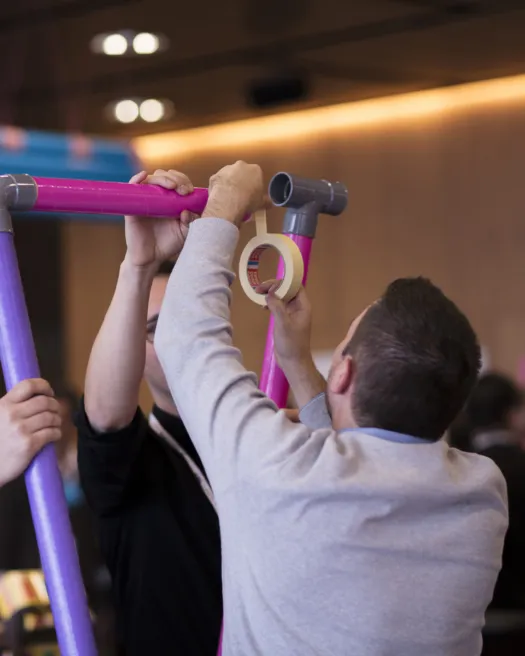
Crafting a Compelling Narrative
Understanding the role of the brand (brand ideal) in the story is absolutely paramount. In other words, defining your role in the world is key.
Take IEM Group, leaders in parking solutions. Their narrative — “Innovative Parking Solutions for Smart Cities” — is carefully built. It reframes their offer from “meters and sensors” to “mobility solutions.” It speaks to aspirations: of cities becoming smarter, of tech improving quality of life. And it casts IEM as the enabler of that future.
The reasoning behind the company’s brand strategy is simple, as Director Philippe Menoud explains:
If we help cities understand how our parking management platform can help ease their mobility issues, we are more likely to be able to sell our products to them.
That’s brand storytelling in action.

Telling a Story that Never Ends
The best stories evolve, but don’t expire. IBM, for instance, has spent years building on a simple idea: “Let’s make the world smarter.” This gives them room to explore AI, cloud, quantum computing — all under one consistent banner.
Once defined, your brand story becomes the backbone of your brand strategy. It informs your visual identity, your tone of voice, your website, your sales materials, and your customer experience. You want your customers to feel engaged, at all times and across all touch-points, without having to reinvent the wheel every year. IBM is a good example of this. Since the planet can always get smarter, the story will never end. Once you have a good hold on your company’s narrative, it becomes the foundation for all your branding assets and sets the tone for future communications. Now you can start building content on top.

Where to Start Building Your Story
Crafting a compelling brand narrative isn’t just about creativity — it’s about structure, clarity, and relevance. Strong stories follow patterns: they contextualise, humanise, and differentiate. Yet many B2B firms struggle to articulate what makes them truly unique. That’s where a structured approach becomes essential.
At Creative Supply, we use our proprietary Brand Story Canvas™ to help clients build or refine their narrative. It is a tool that helps you develop a visual map of the seven elements that make up your brand story, from context to plot to hero (or heroine). Our method ensures your story is authentic, strategically aligned, and ready to scale.
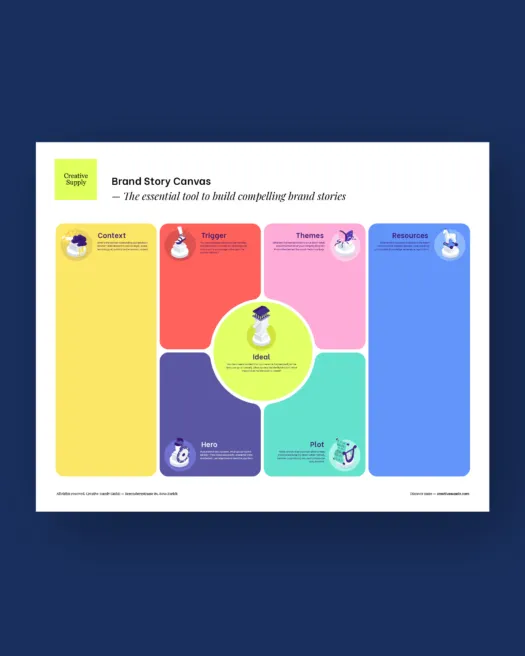
Ready to Tell Your Story?
Whether you’re launching a new offer, entering a new market, or refreshing your brand, a strong brand story gives people a reason to believe and to choose you. And in B2B, where relationships run deep and decisions take time, a compelling story might just be your strongest conversion tool.
If you're ready to turn your company’s mission into a magnetic narrative, let’s talk.
👉 Contact us to build your brand story with Creative Supply.
How to Build a Compelling B2B Brand Story



How to Build a Compelling B2B Brand Story
In B2B, most brands focus on function: specs, features, processes. But function alone doesn’t win hearts, or long-term partnerships. To truly differentiate in an increasingly commoditised market, your brand needs a compelling story. One that not only communicates who you are, but why you exist.
A strong brand story distills your company’s vision, values and role in the world into a coherent narrative. Unlike a tagline or slogan, it’s not just marketing, it’s strategic. It provides clarity internally, attracts the right clients, and gives your communications lasting consistency.
Why Does a Brand Story Matter in B2B?
A brand story is a strategic narrative that:
- Explains the context around the brand’s origin and the trigger pushing to challenge the status quo
- Communicates an organisation’s vision, benefits and values in a memorable and emotional way
- Helps establish the role of a brand amidst its competition, the market and the world at large
- Cannot be copied. In the context of product commoditisation, ever-shorter product development cycles and patent infringement, a brand story offers B2B companies a resilient way to assert their individuality.
Finding the Right Story for Your B2B Business
Digitalisation, globalisation and commoditisation are just a few of the trends prompting companies to adapt their narrative, so their clients and business partners understand what they stand for and where they are going. In this sense, the brand story acts as a “stable agent” in periods of organisational transition.
Take Lift, a Geneva-based organisation we helped update its brand narrative to better reflect its role and ambitions. Originally known for their yearly tech conference, Lift had outgrown that positioning. Internally, the team was driving initiatives around open innovation and digital transformation. But externally, they were still seen as “just an event”. The story we developed frames Lift as an international organisation promoting open-innovation as a positive change driver for business and society rather than as an events organiser.
By reframing their brand story around their bigger mission, using open innovation to create positive impact for business and society, Lift repositioned itself as a thought leader. This narrative shift helped them attract new partners, grow internationally, and expand their service offering.

Crafting a Compelling Narrative
Understanding the role of the brand (brand ideal) in the story is absolutely paramount. In other words, defining your role in the world is key.
Take IEM Group, leaders in parking solutions. Their narrative — “Innovative Parking Solutions for Smart Cities” — is carefully built. It reframes their offer from “meters and sensors” to “mobility solutions.” It speaks to aspirations: of cities becoming smarter, of tech improving quality of life. And it casts IEM as the enabler of that future.
The reasoning behind the company’s brand strategy is simple, as Director Philippe Menoud explains:
If we help cities understand how our parking management platform can help ease their mobility issues, we are more likely to be able to sell our products to them.
That’s brand storytelling in action.

Telling a Story that Never Ends
The best stories evolve, but don’t expire. IBM, for instance, has spent years building on a simple idea: “Let’s make the world smarter.” This gives them room to explore AI, cloud, quantum computing — all under one consistent banner.
Once defined, your brand story becomes the backbone of your brand strategy. It informs your visual identity, your tone of voice, your website, your sales materials, and your customer experience. You want your customers to feel engaged, at all times and across all touch-points, without having to reinvent the wheel every year. IBM is a good example of this. Since the planet can always get smarter, the story will never end. Once you have a good hold on your company’s narrative, it becomes the foundation for all your branding assets and sets the tone for future communications. Now you can start building content on top.

Where to Start Building Your Story
Crafting a compelling brand narrative isn’t just about creativity — it’s about structure, clarity, and relevance. Strong stories follow patterns: they contextualise, humanise, and differentiate. Yet many B2B firms struggle to articulate what makes them truly unique. That’s where a structured approach becomes essential.
At Creative Supply, we use our proprietary Brand Story Canvas™ to help clients build or refine their narrative. It is a tool that helps you develop a visual map of the seven elements that make up your brand story, from context to plot to hero (or heroine). Our method ensures your story is authentic, strategically aligned, and ready to scale.

Ready to Tell Your Story?
Whether you’re launching a new offer, entering a new market, or refreshing your brand, a strong brand story gives people a reason to believe and to choose you. And in B2B, where relationships run deep and decisions take time, a compelling story might just be your strongest conversion tool.
If you're ready to turn your company’s mission into a magnetic narrative, let’s talk.
👉 Contact us to build your brand story with Creative Supply.
DownloadHow to Build a Compelling B2B Brand Story
Download
A strong brand story distills your company’s vision, values and role in the world into a coherent narrative. Unlike a tagline or slogan, it’s not just marketing, it’s strategic. It provides clarity internally, attracts the right clients, and gives your communications lasting consistency.
Why Does a Brand Story Matter in B2B?
A brand story is a strategic narrative that:
- Explains the context around the brand’s origin and the trigger pushing to challenge the status quo
- Communicates an organisation’s vision, benefits and values in a memorable and emotional way
- Helps establish the role of a brand amidst its competition, the market and the world at large
- Cannot be copied. In the context of product commoditisation, ever-shorter product development cycles and patent infringement, a brand story offers B2B companies a resilient way to assert their individuality.
Finding the Right Story for Your B2B Business
Digitalisation, globalisation and commoditisation are just a few of the trends prompting companies to adapt their narrative, so their clients and business partners understand what they stand for and where they are going. In this sense, the brand story acts as a “stable agent” in periods of organisational transition.
Take Lift, a Geneva-based organisation we helped update its brand narrative to better reflect its role and ambitions. Originally known for their yearly tech conference, Lift had outgrown that positioning. Internally, the team was driving initiatives around open innovation and digital transformation. But externally, they were still seen as “just an event”. The story we developed frames Lift as an international organisation promoting open-innovation as a positive change driver for business and society rather than as an events organiser.
By reframing their brand story around their bigger mission, using open innovation to create positive impact for business and society, Lift repositioned itself as a thought leader. This narrative shift helped them attract new partners, grow internationally, and expand their service offering.

Crafting a Compelling Narrative
Understanding the role of the brand (brand ideal) in the story is absolutely paramount. In other words, defining your role in the world is key.
Take IEM Group, leaders in parking solutions. Their narrative — “Innovative Parking Solutions for Smart Cities” — is carefully built. It reframes their offer from “meters and sensors” to “mobility solutions.” It speaks to aspirations: of cities becoming smarter, of tech improving quality of life. And it casts IEM as the enabler of that future.
The reasoning behind the company’s brand strategy is simple, as Director Philippe Menoud explains:
If we help cities understand how our parking management platform can help ease their mobility issues, we are more likely to be able to sell our products to them.
That’s brand storytelling in action.

Telling a Story that Never Ends
The best stories evolve, but don’t expire. IBM, for instance, has spent years building on a simple idea: “Let’s make the world smarter.” This gives them room to explore AI, cloud, quantum computing — all under one consistent banner.
Once defined, your brand story becomes the backbone of your brand strategy. It informs your visual identity, your tone of voice, your website, your sales materials, and your customer experience. You want your customers to feel engaged, at all times and across all touch-points, without having to reinvent the wheel every year. IBM is a good example of this. Since the planet can always get smarter, the story will never end. Once you have a good hold on your company’s narrative, it becomes the foundation for all your branding assets and sets the tone for future communications. Now you can start building content on top.

Where to Start Building Your Story
Crafting a compelling brand narrative isn’t just about creativity — it’s about structure, clarity, and relevance. Strong stories follow patterns: they contextualise, humanise, and differentiate. Yet many B2B firms struggle to articulate what makes them truly unique. That’s where a structured approach becomes essential.
At Creative Supply, we use our proprietary Brand Story Canvas™ to help clients build or refine their narrative. It is a tool that helps you develop a visual map of the seven elements that make up your brand story, from context to plot to hero (or heroine). Our method ensures your story is authentic, strategically aligned, and ready to scale.

Ready to Tell Your Story?
Whether you’re launching a new offer, entering a new market, or refreshing your brand, a strong brand story gives people a reason to believe and to choose you. And in B2B, where relationships run deep and decisions take time, a compelling story might just be your strongest conversion tool.
If you're ready to turn your company’s mission into a magnetic narrative, let’s talk.
👉 Contact us to build your brand story with Creative Supply.
